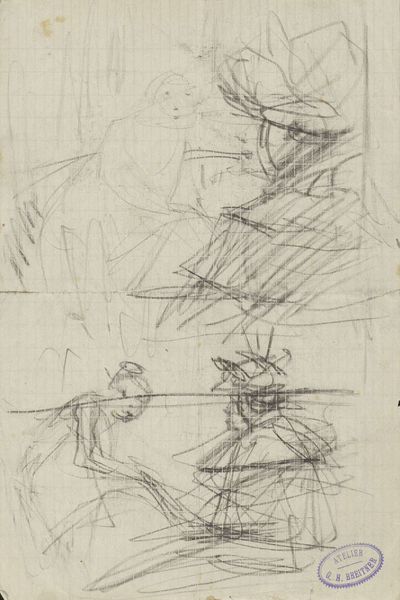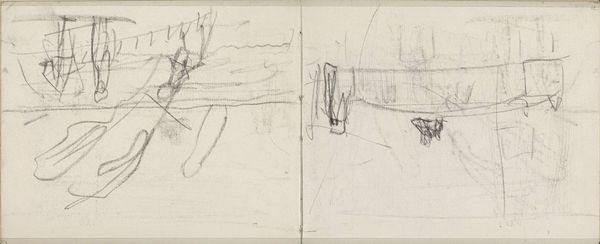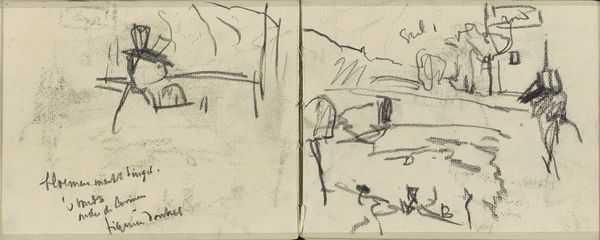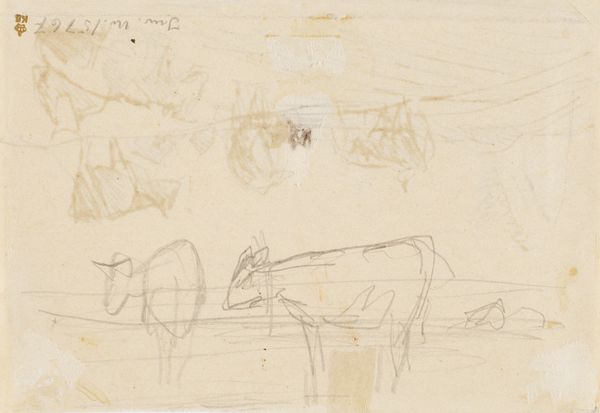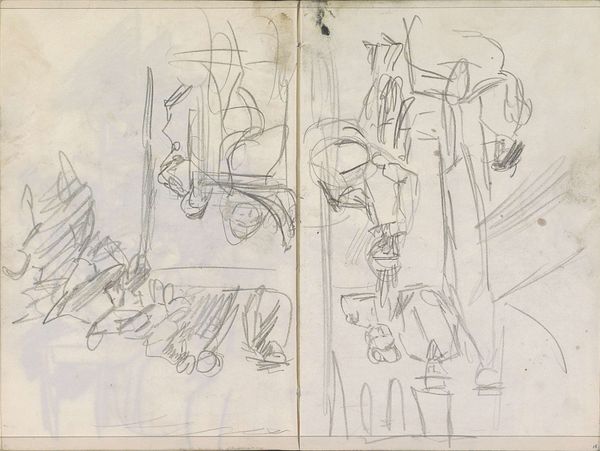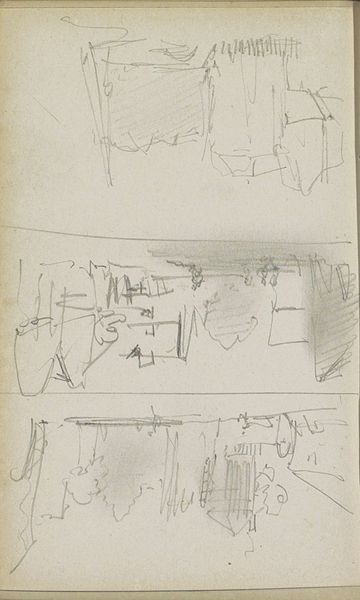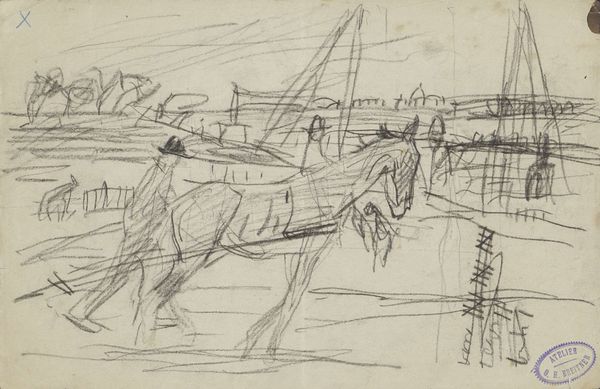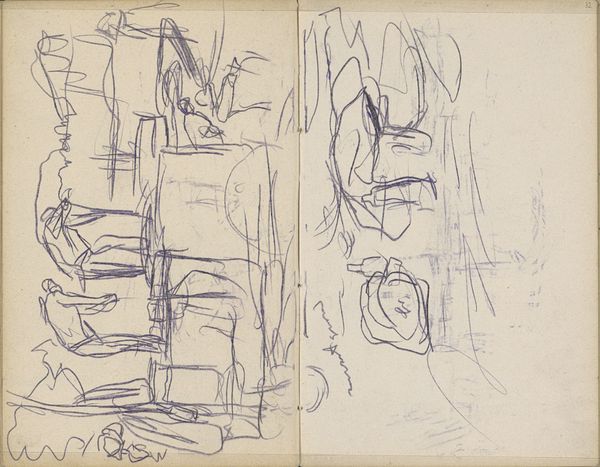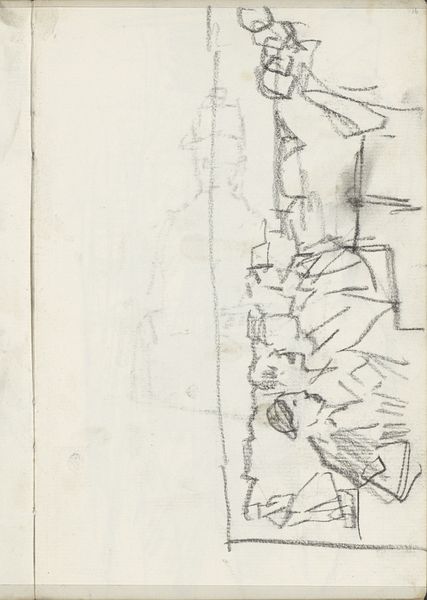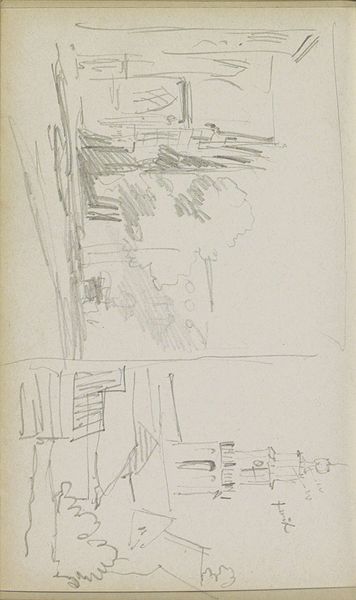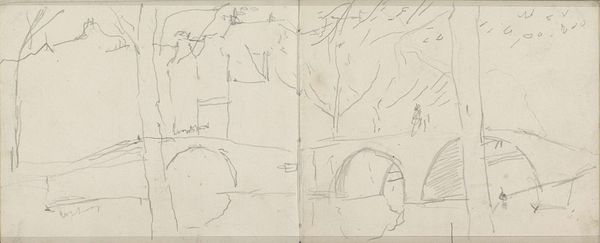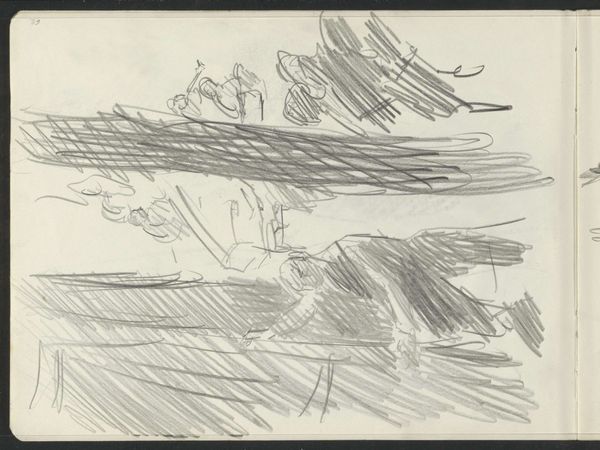
Dimensions: height 131 mm, width 102 mm
Copyright: Rijks Museum: Open Domain
Editor: So, we’re looking at "Ploegpaarden, mogelijk aan het water" by George Hendrik Breitner, likely created sometime between 1886 and 1923. It’s a pencil drawing. The sketchiness almost gives it a sense of movement. What strikes you when you look at it? Curator: Well, considering Breitner's work through a historical lens, particularly his urban scenes, this drawing provides an interesting contrast. Here, we see horses, likely working animals, situated near water. Breitner was known for capturing everyday life, and in this case, it’s the agricultural landscape. This artwork invites consideration of the public role of such imagery in late 19th and early 20th century Netherlands, a time when the nation was rapidly industrializing while still heavily reliant on agriculture. Does the image of working animals challenge the societal representation of progress? Editor: That’s a fascinating perspective! I hadn’t really considered how this image interacts with the broader social context. So, is he perhaps trying to depict these working horses as more noble and more beautiful than what industrialization portrays as valuable? Curator: Precisely! This type of depiction can act as a statement. By emphasizing the inherent beauty and strength of these animals at a time when the societal pendulum swings from agriculture to the factories, what political assertion might Breitner have intended? Editor: Perhaps the preservation of simpler life. Thank you, it gives the artwork more complexity. Curator: Indeed. Breitner used realism in many portraits of city life but did he embrace realism to highlight or subtly question the shifts occurring in the late 19th century? These images prompt us to critically evaluate the narrative of progress.
Comments
No comments
Be the first to comment and join the conversation on the ultimate creative platform.
